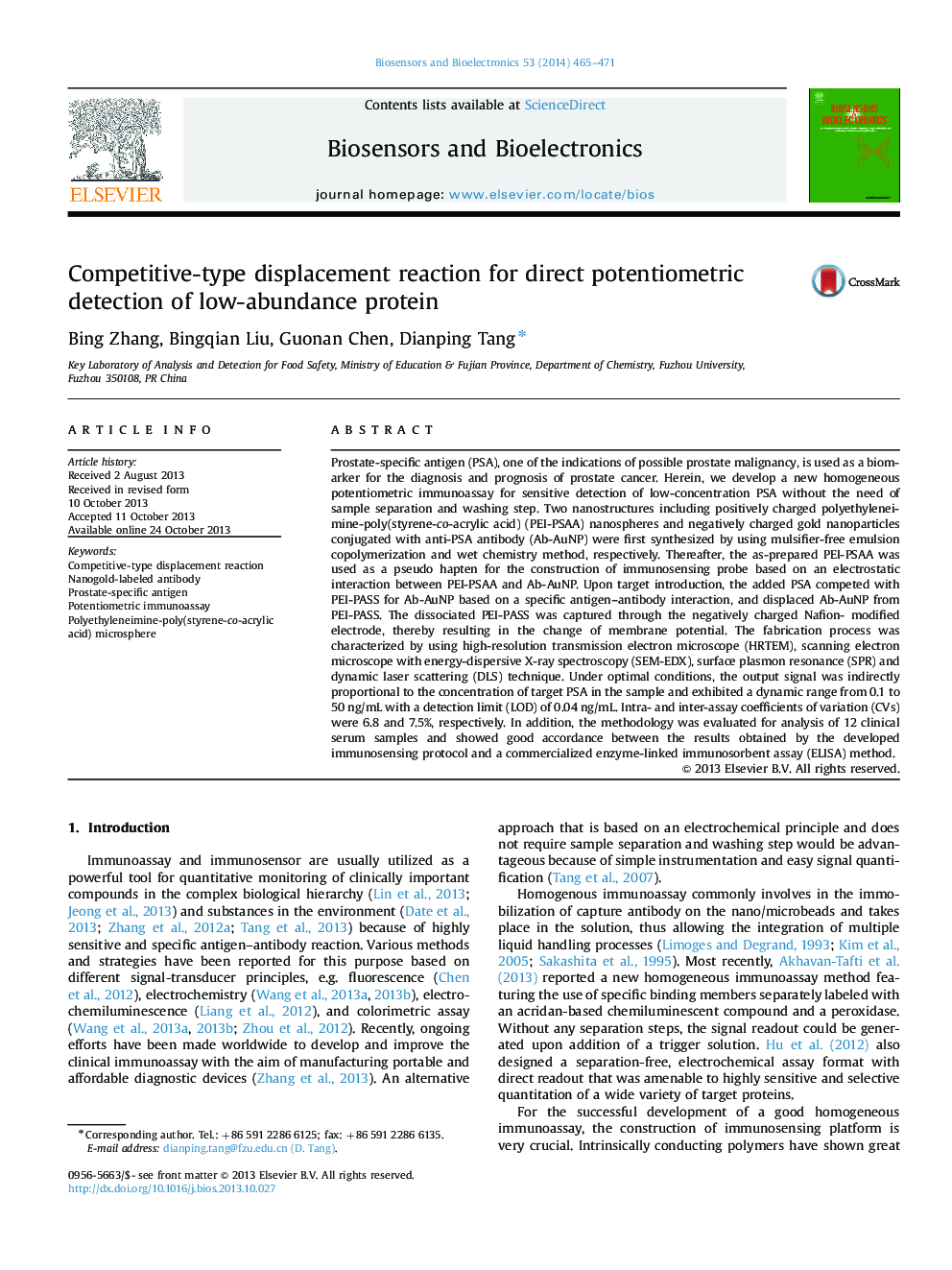| Article ID | Journal | Published Year | Pages | File Type |
|---|---|---|---|---|
| 866726 | Biosensors and Bioelectronics | 2014 | 7 Pages |
•We introduced a new homogeneous immunoassay for detection of low-abundance protein.•Competitive-type displacement reaction was utilized during the measurement.•The assay was carried out on an electrostatic reaction-based sensing platform.
Prostate-specific antigen (PSA), one of the indications of possible prostate malignancy, is used as a biomarker for the diagnosis and prognosis of prostate cancer. Herein, we develop a new homogeneous potentiometric immunoassay for sensitive detection of low-concentration PSA without the need of sample separation and washing step. Two nanostructures including positively charged polyethyleneimine-poly(styrene-co-acrylic acid) (PEI-PSAA) nanospheres and negatively charged gold nanoparticles conjugated with anti-PSA antibody (Ab-AuNP) were first synthesized by using mulsifier-free emulsion copolymerization and wet chemistry method, respectively. Thereafter, the as-prepared PEI-PSAA was used as a pseudo hapten for the construction of immunosensing probe based on an electrostatic interaction between PEI-PSAA and Ab-AuNP. Upon target introduction, the added PSA competed with PEI-PASS for Ab-AuNP based on a specific antigen–antibody interaction, and displaced Ab-AuNP from PEI-PASS. The dissociated PEI-PASS was captured through the negatively charged Nafion- modified electrode, thereby resulting in the change of membrane potential. The fabrication process was characterized by using high-resolution transmission electron microscope (HRTEM), scanning electron microscope with energy-dispersive X-ray spectroscopy (SEM-EDX), surface plasmon resonance (SPR) and dynamic laser scattering (DLS) technique. Under optimal conditions, the output signal was indirectly proportional to the concentration of target PSA in the sample and exhibited a dynamic range from 0.1 to 50 ng/mL with a detection limit (LOD) of 0.04 ng/mL. Intra- and inter-assay coefficients of variation (CVs) were 6.8 and 7.5%, respectively. In addition, the methodology was evaluated for analysis of 12 clinical serum samples and showed good accordance between the results obtained by the developed immunosensing protocol and a commercialized enzyme-linked immunosorbent assay (ELISA) method.
